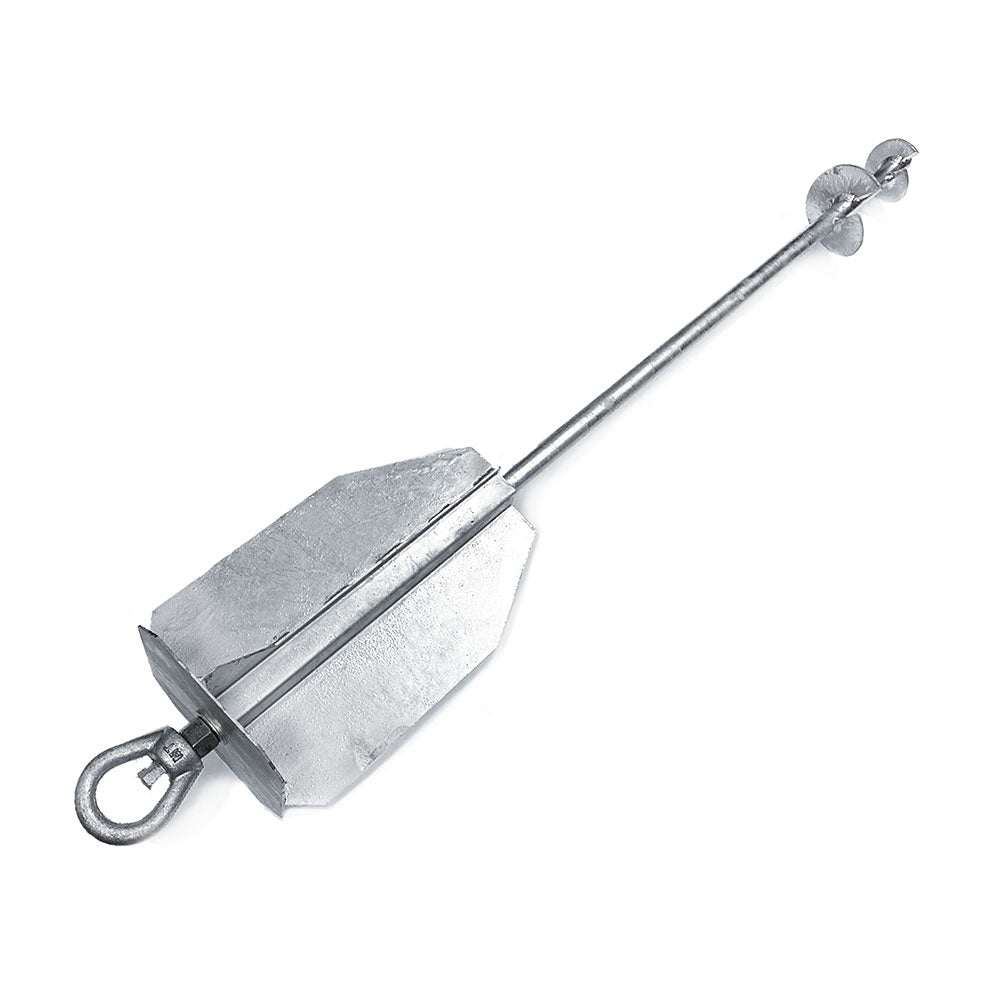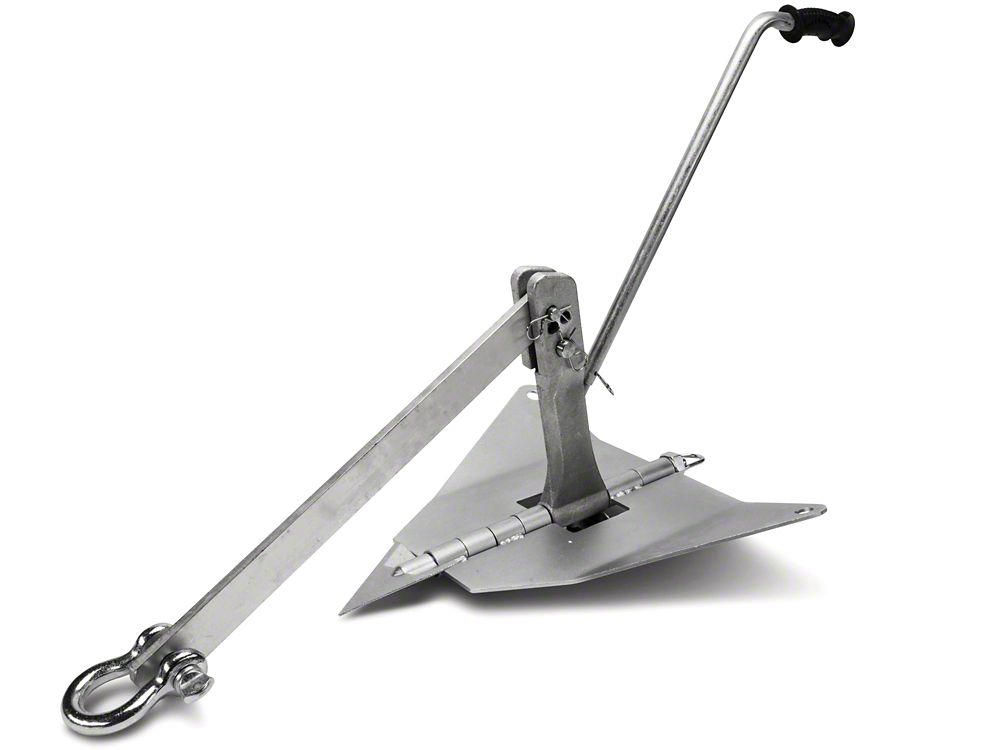New Advancements in Ground Anchor Design and Their Advantages
New Advancements in Ground Anchor Design and Their Advantages
Blog Article
Discover the Different Kinds of Ground Support for Your Next Task
When embarking on a building and construction or landscape design task, comprehending the different kinds of ground anchors readily available is vital to ensuring both security and durability (Ground Anchor). From auger anchors, which excel in diverse dirt problems, to risk anchors created for momentary installments, the choices are many. Furthermore, concrete and screw anchors present unique benefits in details situations, while deadman anchors are tailored for applications calling for resistance to side forces. The option of an appropriate anchor kind can significantly affect the overall success of your project, motivating more exploration into their respective advantages and applications.

Auger Anchors
Auger supports are a popular option in different building and construction and landscaping jobs due to their special style and reliable anchoring capabilities. These anchors consist of a helical screw-like shaft that is driven into the ground, permitting for a secure and safe and secure hold. The spiral style assists in very easy installation and maximizes resistance versus side pressures, making auger supports specifically reliable in applications such as secure fencing, short-term frameworks, and disintegration control.
The installation process of auger anchors is fairly simple. Auger anchors can be easily gotten rid of and reused, which adds to their cost-effectiveness and sustainability.
Among the substantial benefits of auger supports is their capacity to distribute loads evenly throughout the surrounding soil, reducing the danger of soil disruption and lessening environmental influence. In addition, they are less at risk to heaving or loosening in time compared to traditional securing approaches. Consequently, auger anchors are an outstanding option for jobs calling for long lasting and dependable anchoring remedies.

Stake Anchors
When it pertains to securing structures in a range of exterior applications, risk supports offer a uncomplicated and reliable service. These anchors are commonly created from long lasting materials such as steel or aluminum, created to endure environmental stresses while offering optimum security. Their simple layout permits for quick installation, making them an excellent choice for permanent or temporary anchoring needs.
Stake supports are specifically valuable in securing camping tents, covers, and other light-weight structures versus wind and weather condition. They work by being driven right into the ground at an angle, producing a solid hold that resists pull-out forces - Ground Anchor. The efficiency of risk supports depends on a number of aspects, consisting of soil type, dampness material, and the angle of installation
For added protection, many stake supports come with add-on points for ropes or bands, permitting stress modifications as necessary. In applications such as landscaping or building, they can successfully maintain equipment or structures on unequal terrain. On the whole, risk anchors supply a versatile and economical option for securing numerous exterior setups, making them a preferred selection for contractors and do it yourself enthusiasts alike.
Concrete Anchors
Concrete supports provide a durable option for protecting structures to concrete surface areas, making certain stability and safety in numerous applications. These anchors are necessary for tasks ranging from residential building and constructions to massive industrial setups. They can be found in different kinds, consisting of growth anchors, sticky anchors, and undercut supports, each designed for particular lots requirements and ecological problems.
Expansion supports count on mechanical mechanisms to hold the concrete when installed. They are excellent for tool to sturdy applications. Sticky supports utilize high-strength epoxy or material to bond the support to the concrete, using exceptional load-bearing capabilities, specifically in broken concrete circumstances. Undercut anchors produce a special shape within the concrete, supplying outstanding holding power, specifically in applications where tensile tons prevail.
When implemented properly, concrete supports significantly improve the structural stability read more of different projects, making them important in modern-day building methods. Recognizing the specific needs of your project will certainly help in picking the ideal type of concrete anchor for the job.
Screw Anchors

Screw supports are a flexible attaching remedy that can be efficiently utilized in a selection of applications where conventional concrete anchors may not be sufficient. These supports include a helical style that allows them to be conveniently driven right into the ground, making them perfect for use in soil and other substratums. Their one-of-a-kind framework supplies excellent holding power and resistance to pull-out forces, making them appropriate for numerous tasks, from landscape design to structural assistance.
One of the key advantages of screw supports is their simplicity of installation. They require minimal devices and can usually be mounted without the demand for excavation, which conserves both time and labor prices. In addition, screw supports can be eliminated and reused, providing a sustainable service for short-term applications.
Screw anchors are particularly valuable in locations where soil problems are testing, such as loosened or sandy dirts. Their capability to be mounted at varying midsts permits modification based upon particular project demands. On Homepage the whole, screw anchors give a trustworthy and efficient anchoring technique, making them a superb selection for professionals and engineers looking for efficient options for their projects.
Deadman Anchors
Deadman anchors work as a durable solution for supporting frameworks in tough problems, especially where conventional anchoring approaches might fail. These anchors consist of large, hefty items buried underground, which produce resistance versus side forces. The design generally involves a straight element, such as a block of concrete or a steel plate, hidden in the soil, to which bands or cords are attached.
The effectiveness of deadman anchors exists in their capability to distribute loads over a larger location, minimizing the risk of failing in unstable dirt conditions. They are specifically beneficial in applications such as preserving walls, temporary frameworks, and slope stabilization, where dirt activity can jeopardize the honesty of the framework.
Installation of deadman supports calls for mindful preparation to ensure they are positioned at the correct depth and orientation, maximizing their load-bearing capability. While they may need official statement even more labor and product than light-weight anchors, their reliability in unfavorable conditions makes them vital for lasting jobs. Deadman anchors are flexible and can be adjusted to numerous applications, making them a go-to selection for designers facing unique challenges in their projects.
Final Thought
Auger anchors excel in varied soil conditions, while stake anchors suit short-term applications. For concrete surfaces, development and glue anchors provide trustworthy options, and screw supports supply adaptability in challenging surfaces.
Furthermore, concrete and screw anchors existing one-of-a-kind advantages in specific scenarios, while deadman anchors are customized for applications needing resistance to side pressures - Ground Anchor.Auger supports are a popular choice in various building and construction and landscaping projects due to their unique layout and efficient anchoring capabilities. They come in different types, consisting of expansion anchors, sticky supports, and undercut supports, each created for specific load demands and environmental conditions
Adhesive supports make use of high-strength epoxy or material to bond the anchor to the concrete, providing superior load-bearing capabilities, particularly in split concrete scenarios. On the whole, screw anchors provide a trustworthy and reliable securing method, making them an exceptional choice for professionals and designers looking for effective remedies for their projects.
Report this page